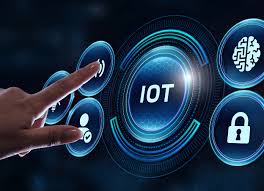Revolutionizing Agriculture in Uganda: The Role of the Internet of Things (IoT)
 Patrick Kaweesi
Patrick Kaweesi
Agriculture is the backbone of Uganda's economy, employing the majority of the population and contributing significantly to the country's GDP. However, traditional farming methods face numerous challenges, including climate change, pest infestations, and inefficient resource use. The introduction of the Internet of Things (IoT) in agriculture offers promising solutions to these challenges, paving the way for a more efficient, productive, and sustainable agricultural sector.
Understanding IoT in Agriculture
The Internet of Things (IoT) refers to a network of interconnected devices equipped with sensors and software to collect and exchange data. In agriculture, IoT devices can monitor environmental conditions, manage resources, and automate farming operations. By leveraging IoT technology, farmers can make data-driven decisions to optimize their practices and increase crop yields.
Key Benefits of IoT in Ugandan Agriculture
- Precision Farming
Precision farming involves using IoT sensors and data analytics to monitor and manage farm operations with high accuracy. Soil sensors can measure moisture levels, nutrient content, and temperature, enabling farmers to tailor irrigation and fertilization practices to specific crop needs. This targeted approach reduces resource wastage, enhances crop health, and boosts productivity.
- Smart Irrigation
Water scarcity is a critical issue for many Ugandan farmers. IoT-enabled irrigation systems allow for efficient water management by delivering the right amount of water at the right time. These systems use real-time data from soil moisture sensors and weather forecasts to automate irrigation schedules, ensuring that crops receive adequate hydration without over-watering.
- Livestock Monitoring
IoT technology extends beyond crop farming to livestock management. IoT devices can monitor the health and location of livestock, providing valuable insights into animal behavior and well-being. Farmers can detect early signs of illness, track feeding patterns, and optimize breeding programs, resulting in healthier animals and increased productivity.
- Supply Chain Optimization
IoT enhances the agricultural supply chain by improving traceability and transparency. Sensors can monitor storage conditions and track products from farm to market, ensuring that produce remains fresh and safe for consumption. This traceability helps reduce food waste, improve food safety, and enhance consumer trust in Ugandan agricultural products.
- Data-Driven Decision Making
The vast amounts of data generated by IoT devices empower farmers to make informed decisions about planting, harvesting, and resource allocation. By analyzing trends and patterns, farmers can identify opportunities for improvement and implement strategies that maximize efficiency and profitability.
Challenges and the Way Forward
While the potential benefits of IoT in Ugandan agriculture are immense, several challenges must be addressed to ensure successful implementation. These include infrastructure limitations, high costs, and the need for technical expertise. Government support, private sector investment, and partnerships with technology providers are crucial to overcoming these barriers and promoting IoT adoption.
Conclusion
The integration of IoT in Ugandan agriculture represents a significant step toward modernization and sustainability. By embracing this technology, farmers can improve productivity, reduce resource wastage, and enhance food security. As Uganda continues to harness the power of IoT, the agricultural sector is poised for a revolutionary transformation that will benefit farmers and consumers alike.
BY: Patrick Kaweesi
Agri-Tech Researcher
Bsc Degree IT, Kabale University
Please, like, comment, share, and subscribe to our Newsletter to receive new article updates!
Thank you!
Subscribe to my newsletter
Read articles from Patrick Kaweesi directly inside your inbox. Subscribe to the newsletter, and don't miss out.
Written by

Patrick Kaweesi
Patrick Kaweesi
Bsc IT from Kabale University, Machine Learning and AI Researcher, IOT(Embedded systems) engineer, web developer, app developer with flutter, Entrepreneurship, Innovation, Education, Media